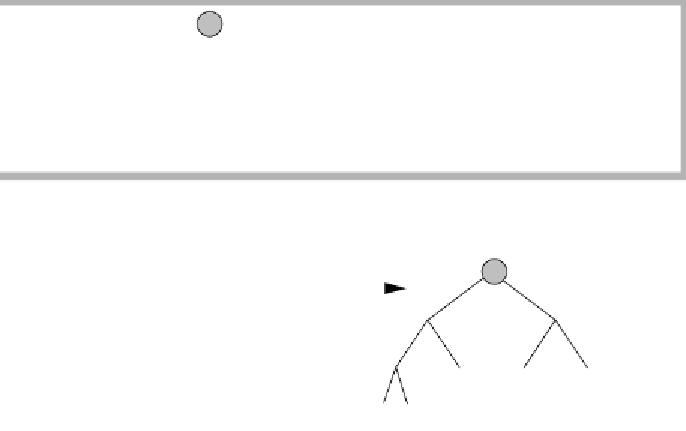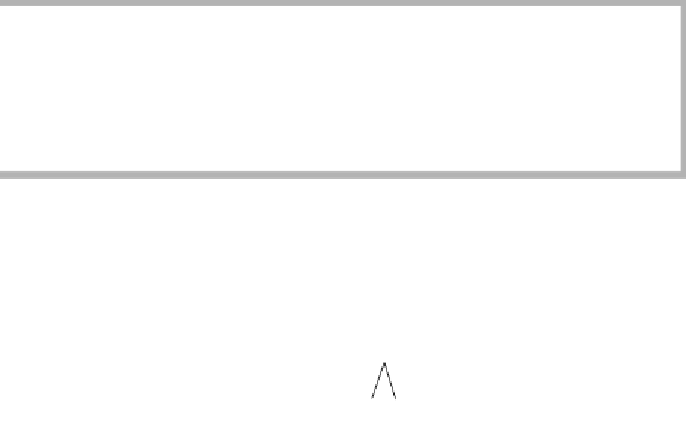Java Reference
In-Depth Information
1.
T
has two black children: Flip colors (Figure 19.50).
2.
T
has an outer red child: Perform a single rotation (Figure 19.51).
3.
T
has an inner red child: Perform a double rotation (Figure 19.52).
Examination of the rotations shows that if
T
has two red children, either a
single rotation or double rotation will work (so it makes sense to do the single
rotation). Note that, if
X
is a leaf, its two children are black, so we can always
apply one of these three mechanisms to make
X
red.
Second, suppose that one of
X
's children is red. Because the rotations in
the first main case always color
X
red, if
X
has a red child, consecutive red
nodes would be introduced. Thus we need an alternative solution. In this case,
we fall through to the next level, obtaining a new
X, T,
and
P
. If we are lucky,
we will fall onto a red node (we have at least a 50 percent chance that this will
figure 19.50
X
has two black
children, and both of
its sibling's children
are black; do a color
flip.
P
P
X
T
X
T
figure 19.51
X
has two black
children, and the outer
child of its sibling is
red; do a single
rotation.
P
T
X
T
P
R
R
X
figure 19.52
X
has two black
children, and the inner
child of its sibling is
red; do a double
rotation.
P
R
X
T
P
T
R
X















Search WWH ::

Custom Search